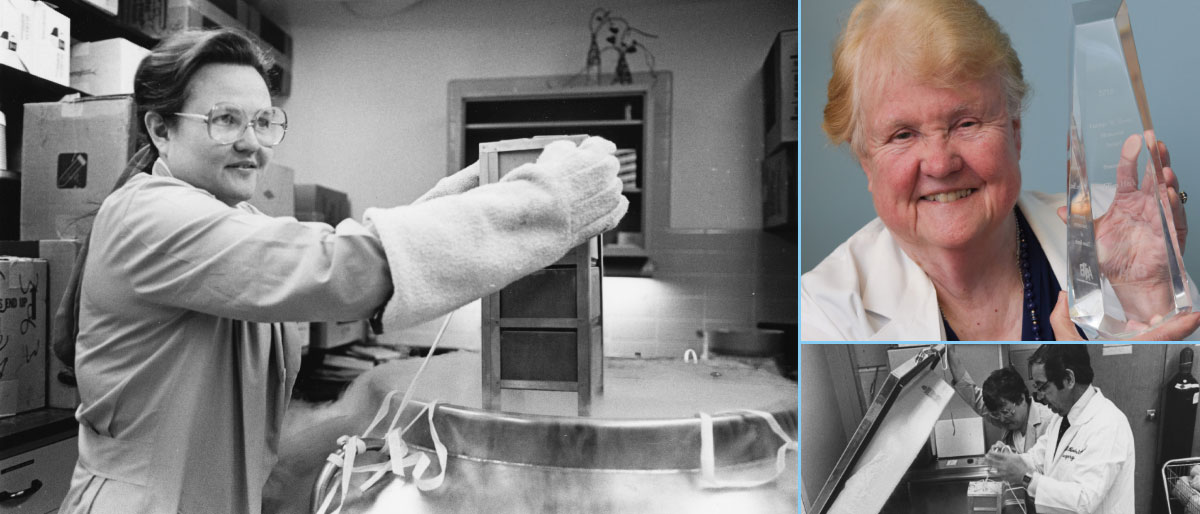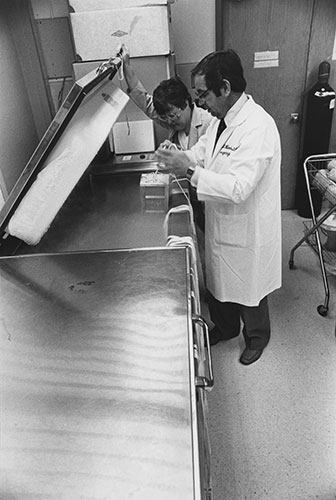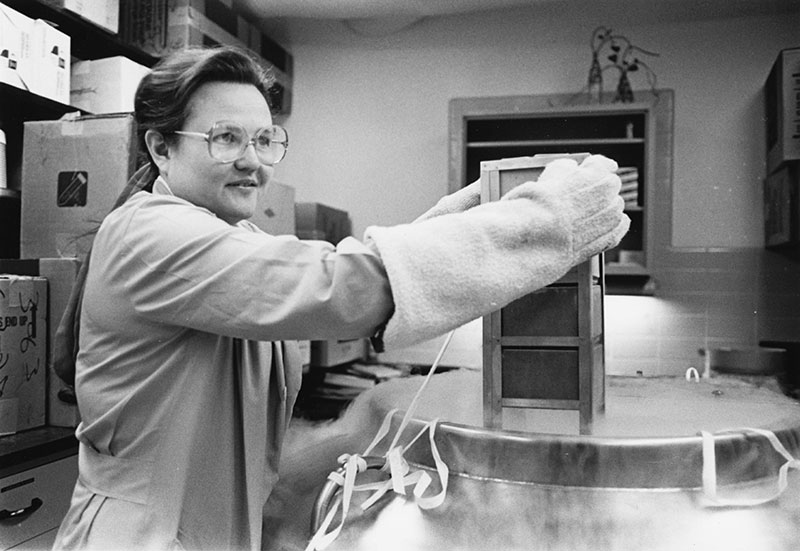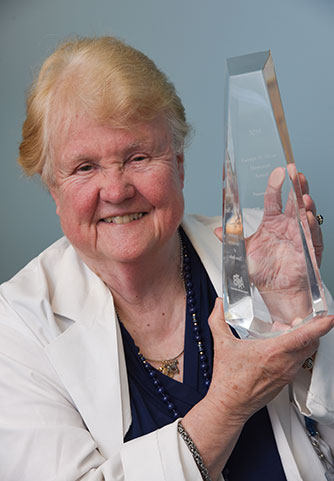Ellen Heck honored as innovator at forefront of tissue banking

In 1972, Ellen Heck was a young research associate at UT Southwestern when Dr. Charles Baxter, a surgeon who had treated the dying President John F. Kennedy at Parkland Memorial Hospital, approached her with a plan to help burn victims.

I could save more people if I had skin grafts, and you’re going to start a skin bank for me,
Dr. Baxter told her one day. Despite Ms. Heck’s protests that she knew nothing about obtaining, processing, and storing the delicate organ – she had been researching bacteria in burn wounds – within months she found herself operating one of the nation’s first skin banks outside of the military. The donated skin would at first be stored in a household-type freezer in a converted 6-by-10-foot hospital linen closet in a pediatric burn unit at Parkland.
By 1986, the UTSW project located at Parkland at the time – now known as the Transplant Services Center at UT Southwestern – had grown to become one of the first three tissue banks accredited by the American Association of Tissue Banks. Recently, the Association honored Ms. Heck, Administrative Director of Transplant Services, with its prestigious George W. Hyatt Memorial Award, named for the Navy surgeon who in 1949 established the Navy’s first tissue bank in order to preserve tissues for injured service members. The award is given annually to an outstanding scientist who has demonstrated superior research, teaching, and service abilities in tissue banking, tissue transplantation, or transplantation medicine.
In January, Ms. Heck also received the Dallas County Medical Society’s Millard J. and Robert L. Heath Award in recognition of her leadership and service to medicine and the Dallas community.

We all applaud Ellen Heck’s achievements and the well-deserved national recognition she has received,
said Dr. Willis Maddrey, Special Assistant to the President at UT Southwestern and Professor of Clinical Affairs and Internal Medicine. She has been an inspirational leader in the successful development of the UT Southwestern tissue bank and in the emergence of our Transplant Services Center.
Under Ms. Heck’s guidance, the operation that started out providing skin for Parkland’s burn patients over the years added corneas, bones, tendons, and heart valves to its list of donor tissues. Along the way, it moved from the linen closet to lab space in UT Southwestern’s Department of Surgery, then to the nearby Dallas County Medical Examiner’s office, and then to the space it occupies today – 23,000 square feet of offices, labs, and special storage freezers and refrigerators spread over two floors at UT Southwestern’s BioCenter on Inwood Road.
The Transplant Services Center currently provides more than 19,000 specially prepared tissues, called allografts, annually to hospitals and treatment centers across Texas, and sometimes even worldwide, Ms. Heck said.
Our tissue bank is one of the best in the country,
said Dr. Dwight Cavanagh, Professor of Ophthalmology and Senior Medical Director for the Transplant Services Center, who uses corneas from the Center. Ms. Heck is one of the leaders in developing the field of tissue banking in this country.
As she built a major tissue bank from scratch – starting at a time when there were no blueprints to guide her – Ms. Heck began collecting the field’s top awards: the American Burn Association’s Curtis P. Artz Distinguished Service Award in 1987, for outstanding contributions in the burn field, followed by the Leonard Heise Award from the Eye Bank Association of America in 1995, in recognition of outstanding devotion to the Association’s development and for exemplifying the precepts of Mr. Heise, a contributor to the fight against blindness and one of the group’s founders.
Ms. Heck reflects back on her first year with the skin bank, when only 70 tissues were donated. She remembers reaching out to two widows who provided the bank’s first skin donations, from their deceased husbands. That started our skin bank. I think that we might not have made it if they had said no,
Ms. Heck said. I think I would have thrown up my hands and gone away.
While those first requests for skin donations were difficult, Ms. Heck soon learned that even parents of young children – especially such parents – can be very generous tissue donors. They so desperately want something good to come out of what can only be viewed as a very tragic loss.
Today, bone and tendon allografts are a larger part of the Transplant Services Center’s operation: spinal discs for back surgery candidates, bone for cancer patients or for those with severe breaks, or tendons to treat athletes with injured knees.

As she cradled her crystal award from the American Association of Tissue Banks, Ms. Heck said she is grateful to the people of Dallas who helped along the way. People have been remarkably receptive from the beginning,
she said. It was a remarkable testimony to the humanity that existed in this community, because when we started asking for skin donations, this was all new.

